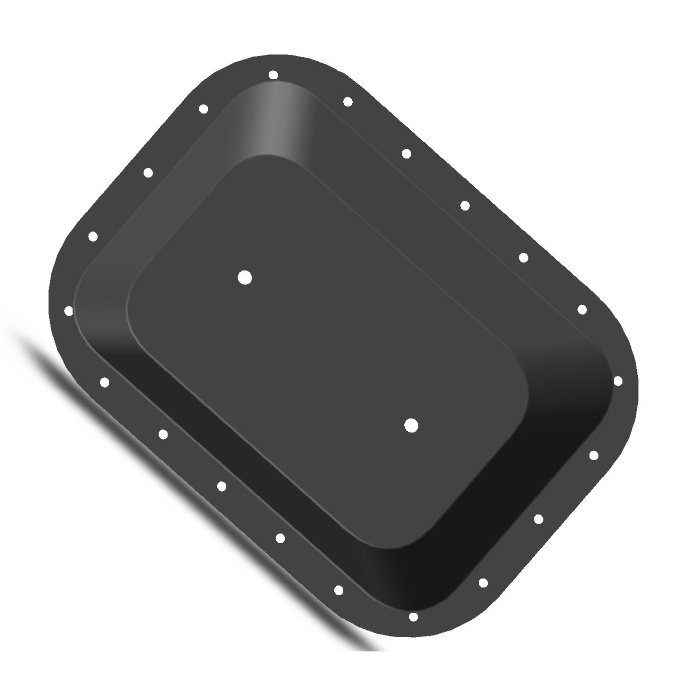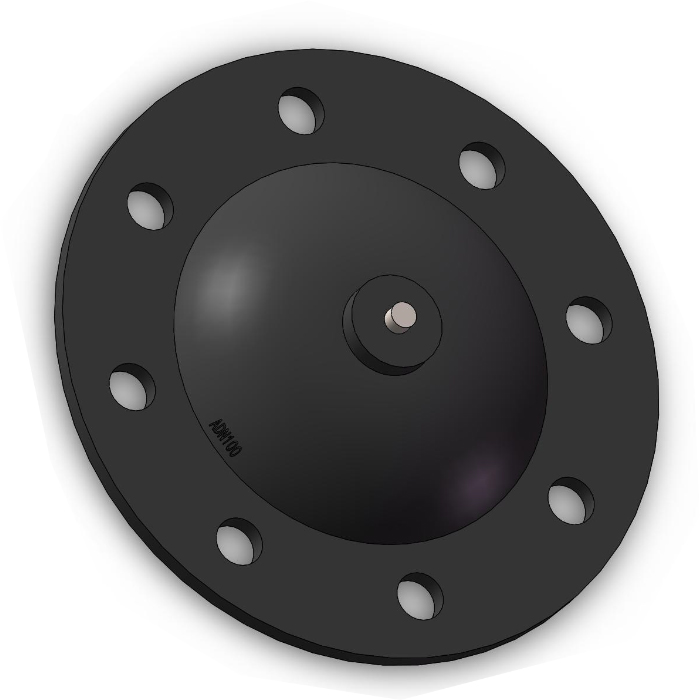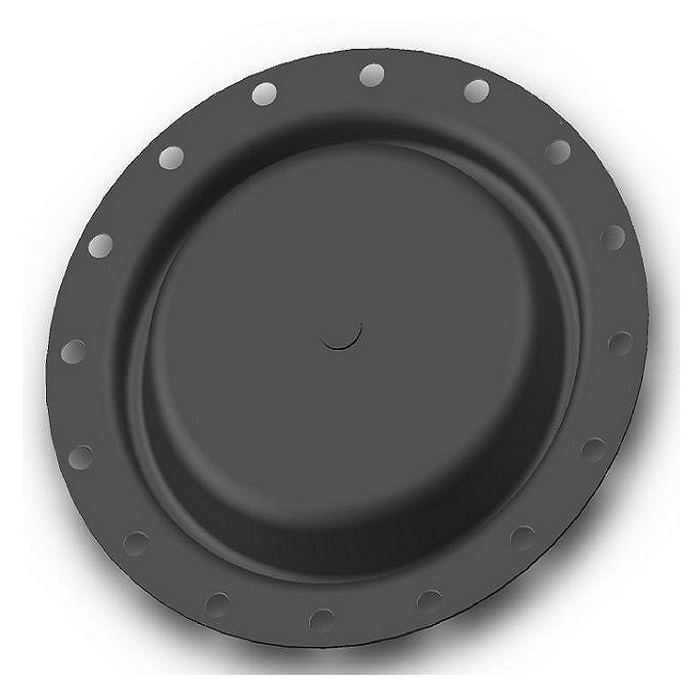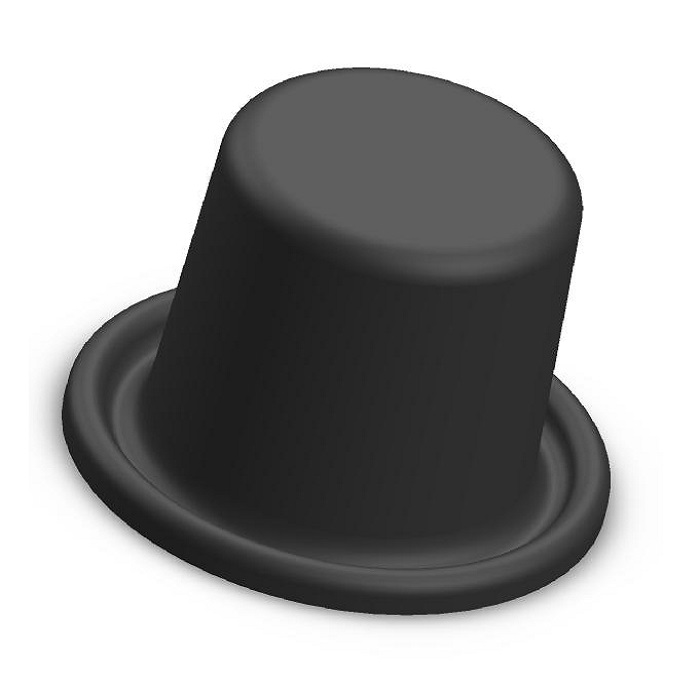We strive to maintain the highest quality standards and meet the needs of our customers. GENERAL SEALTECH LIMITED’s main business focuses on the design, development, manufacturing, and related mold development of diaphragms.
We mainly produce Turbo Actuator Waste-gate Diaphragms,Rolling diaphragm,Teflon / PTFE Diaphragm,Rubber diaphragms,Solenoid Pulse Valve Diaphragms,Diaphragm Valve pump Diaphragms, etc. They are used to seal valves for oil, air, and water or as absorbers. We also offer customized molded products that are produced based on customer samples.
| Product name | wavy rubber diaphragm |
| Place of Origin | Hangzhou,Zhejiang,China |
| Brand Name | GENERAL SEALTECH |
| Colors | yellow,Recommended black |
| Type | Diaphragm |
| Advantage | high strength |
| Certification | National Sanitary Certificate,RoHS,WRAS,REACH,NSF,etc |
| Export region | Africa,Asia,Oceania… |
| Export country | USA,Japan,Italy,Australia,Botswana,British Virgin Islands,Philippines…etc |
| Payment Term | T/T |
| Size | Customizable size |
| Product Material | ACM,NBR,HNBR,AEM,EPDM,etc |
| Surface | Smooth, glossy, textured, matte |
| Packaging Details | carton or according to requirements of the customers |
| After-sales Service | Online technical support |
| MOQ | 100 Pieces(negotiable) |
| Port | Shanghai |
| Application | Seal for Electrical Appliances,Automotive,Machine…etc |
| Service | OEM/ODM/Private |
| Properties | Heat Resistance,Oil Resistance,Chemical Resistance…etc |
| Supply Ability | 50000-200000 Piece/Pieces per Month |
| Lead time (days) | 7-15 (To be negotiated) |
Please note: This table is for reference only, please consult us for specific information.
wavy rubber diaphragm products typically have high plasticity and can be used in very low temperatures and high temperature ranges. They can also be produced using different technologies such as thin film construction, hot melt construction, and fiber construction.
If the medium used is corrosive, corrosion-resistant diaphragm materials should be selected;
Necessary protective measures should be taken to minimize damage to objects that come into contact with the already installed diaphragm.
Provide customized services exclusive to customers, and customize various diaphragm products according to their needs to meet the needs of different industries.
wavy rubber diaphragm—FAQs Guide
2.Are there wavy rubber diaphragm equipped with built-in sensors for real-time monitoring and feedback in automated systems?
3.What types of testing and quality control measures are applied to ensure the reliability and performance of wavy rubber diaphragm?
4.How do wavy rubber diaphragm perform in applications where flexibility and rapid response to pressure changes are crucial?
5.Can wavy rubber diaphragm be used in both dynamic and static sealing applications, and what are the differences in their design and performance?
6.Do wavy rubber diaphragm require maintenance or replacement over time, and what are the signs that indicate the need for replacement?
7.As a wavy rubber diaphragm manufacturer,Can you make custom parts based on my sample?
8.As a wavy rubber diaphragm manufacturer,Can you supply different color materials?
9.Can wavy rubber diaphragm be used in contact with food or pharmaceutical products, and what certifications are required for compliance with industry standards?
10.Are wavy rubber diaphragm used in safety relief valves and pressure relief devices to prevent overpressure situations?
11.How do wavy rubber diaphragm respond to cyclic or pulsating pressure loads, and what is their fatigue life in such conditions?
12.How do wavy rubber diaphragm contribute to the isolation of different process media or gases within a system?
13.About wavy rubber diaphragm,How can I get the best price and quality?
14.What is the expected service life of wavy rubber diaphragm, and how does it vary depending on factors like material and usage?
15.How do wavy rubber diaphragm maintain their flexibility and resilience over time, and what factors can lead to wear or degradation?
16.Are there wavy rubber diaphragm made from eco-friendly or sustainable materials for environmentally conscious applications?
1.Are there wavy rubber diaphragm designed for quick and easy replacement to minimize downtime in industrial processes?
Yes, there are diaphragms designed for quick and easy replacement to minimize downtime in industrial processes. These diaphragms are typically made of materials such as rubber, silicone, or PTFE, and are designed to be easily replaced without the need for tools or special equipment. Additionally, some diaphragms are designed with quick-connect fittings to further reduce downtime.
2.Are there wavy rubber diaphragm equipped with built-in sensors for real-time monitoring and feedback in automated systems?
Yes, there are diaphragms equipped with built-in sensors for real-time monitoring and feedback in automated systems. These diaphragms are typically used in industrial applications such as pumps, valves, and compressors. The sensors measure the pressure and flow of the system and provide feedback to the control system to ensure the system is operating correctly.
3.What types of testing and quality control measures are applied to ensure the reliability and performance of wavy rubber diaphragm?
To ensure the reliability of the product, our wavy rubber diaphragm will apply these tests and quality:
1. Visual Inspection: Visual inspection is used to check for any visible defects in the diaphragm material, such as cracks, tears, or other damage.
2. Pressure Testing: Pressure testing is used to ensure that the diaphragm can withstand the pressure it is designed to handle.
3. Leak Testing: Leak testing is used to check for any leaks in the diaphragm material.
4. Durability Testing: Durability testing is used to ensure that the diaphragm can withstand the wear and tear of its intended use.
5. Chemical Testing: Chemical testing is used to check for any chemical reactions that could affect the performance of the diaphragm.
6. Electrical Testing: Electrical testing is used to check for any electrical issues that could affect the performance of the diaphragm.
7. Temperature Testing: Temperature testing is used to ensure that the diaphragm can withstand the temperatures it is designed to handle.
4.How do wavy rubber diaphragm perform in applications where flexibility and rapid response to pressure changes are crucial?
Diaphragms are ideal for applications where flexibility and rapid response to pressure changes are crucial. They are designed to flex and move in response to pressure changes, allowing them to quickly adjust to changing conditions. This makes them ideal for use in applications such as pumps, valves, and other pressure-sensitive systems. Additionally, diaphragms are often used in applications where a tight seal is required, such as in fuel tanks and hydraulic systems.

5.Can wavy rubber diaphragm be used in both dynamic and static sealing applications, and what are the differences in their design and performance?
Yes, diaphragms can be used in both dynamic and static sealing applications. The main difference between the two is in the design and performance.
Dynamic sealing applications require a diaphragm that is designed to withstand the constant movement and pressure of the application. This type of diaphragm is usually made of a flexible material such as rubber or silicone, and is designed to flex and move with the application.
Static sealing applications require a diaphragm that is designed to remain in a fixed position and provide a tight seal. This type of diaphragm is usually made of a rigid material such as metal or plastic, and is designed to remain in a fixed position and provide a tight seal.
6.Do wavy rubber diaphragm require maintenance or replacement over time, and what are the signs that indicate the need for replacement?
Yes, diaphragms require maintenance and replacement over time. Signs that indicate the need for replacement include a decrease in sound quality, a decrease in volume, and a decrease in the overall performance of the diaphragm. Additionally, if the diaphragm is damaged or cracked, it should be replaced immediately.
7.As a wavy rubber diaphragm manufacturer,Can you make custom parts based on my sample?
Yes, you can send the sample to us by express and we will evaluate the sample, scan the features and draft 3D drawing for production.
8.As a wavy rubber diaphragm manufacturer,Can you supply different color materials?
Yes, we can produce custom molded rubber and silicone rubber products in different colors, the color code will be required in case of an order.

9.Can wavy rubber diaphragm be used in contact with food or pharmaceutical products, and what certifications are required for compliance with industry standards?
Yes, diaphragms can be used in contact with food or pharmaceutical products. Depending on the application, the diaphragm must meet certain industry standards and certifications. For food contact applications, the diaphragm must meet the requirements of the US Food and Drug Administration (FDA) and the European Union (EU) Regulation 10/2011. For pharmaceutical applications, the diaphragm must meet the requirements of the US Pharmacopeia (USP) Class VI and the European Pharmacopoeia (EP).
10.Are wavy rubber diaphragm used in safety relief valves and pressure relief devices to prevent overpressure situations?
Yes, diaphragms are commonly used in safety relief valves and pressure relief devices to prevent overpressure situations. The diaphragm is a flexible membrane that is designed to open when the pressure inside the device reaches a certain level, allowing the pressure to be released.
11.How do wavy rubber diaphragm respond to cyclic or pulsating pressure loads, and what is their fatigue life in such conditions?
Diaphragms respond to cyclic or pulsating pressure loads by flexing and deflecting in response to the pressure. The fatigue life of a diaphragm in such conditions depends on the material used, the frequency of the pressure load, and the magnitude of the pressure load. Generally, fatigue life is shorter for higher frequency and higher magnitude pressure loads.
12.How do wavy rubber diaphragm contribute to the isolation of different process media or gases within a system?
Diaphragms are used to separate different process media or gases within a system by creating a physical barrier between them. This barrier prevents the media or gases from mixing, thus providing a degree of isolation. Diaphragms are also used to control the flow of media or gases within a system, as they can be designed to open and close in response to pressure or other external factors.

13.About wavy rubber diaphragm,How can I get the best price and quality?
The price depends on the quantity, design and size. If you order more, the price and shipping will be cheaper.
14.What is the expected service life of wavy rubber diaphragm, and how does it vary depending on factors like material and usage?
The expected service life of diaphragms can vary greatly depending on the material and usage. Generally, diaphragms made of rubber or elastomeric materials can last anywhere from 5 to 10 years, depending on the application and environment. Diaphragms made of metal or plastic can last much longer, up to 20 years or more. Factors such as temperature, pressure, and chemical exposure can also affect the service life of diaphragms.
15.How do wavy rubber diaphragm maintain their flexibility and resilience over time, and what factors can lead to wear or degradation?
Diaphragms maintain their flexibility and resilience over time by being made of materials that are resistant to wear and tear. Common materials used for diaphragms include rubber, silicone, and polyurethane. These materials are designed to be durable and flexible, and can withstand a wide range of temperatures and pressures.
Factors that can lead to wear or degradation of diaphragms include exposure to extreme temperatures, exposure to chemicals, and physical damage. Additionally, diaphragms can become brittle over time due to age and exposure to the elements. To prevent wear or degradation, it is important to inspect diaphragms regularly and replace them when necessary.
16.Are there wavy rubber diaphragm made from eco-friendly or sustainable materials for environmentally conscious applications?
Yes, there are diaphragms made from eco-friendly or sustainable materials for environmentally conscious applications. These diaphragms are typically made from natural rubber, silicone, or other biodegradable materials. They are designed to be more durable and longer lasting than traditional diaphragms, and they are also designed to be more energy efficient.

Tags: fluorosilicone rubber diaphragms,cub cadet 2186 fuel pump diaphragm,fuel regulator diaphragm,ac fuel pump diaphragm

